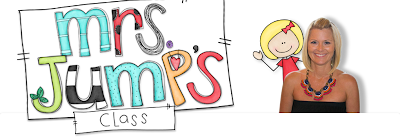Hi, Teaching Friends!
I'm back on track with the
Worksheets Don't Grow Dendrites book study. Talking about the material in our current chapter is just preaching to the choir! In the primary grades, our days are (hopefully!) filled with "Manipulatives, Experiments, Labs, and Models".
Every chapter in this book has a set of "Theoretical Framework" quotes. Here's my favorite from this chapter. It says it all. There is no downside to having students learn by touching, feeling, modeling, and getting real with the real stuff!.

A few years ago, a district I was teaching in was gifted, blessed, granted or let's-be-honest, burdened with a new science series. Science materials for the lower grades had previously been sparse and dated. But this new series, well, we were going to love this one, we were told. [Have you ever been told something like that? Be suspicious. Be very suspicious.] The materials we received were extensive. Written materials, that is. Multiple kinds of workbooks with not enough space for first graders to write their answers. Huge hardcover text books with several hundred pages in them. It took forever for some of my students to find the right page and then if they let go of the book for a second it would flip shut. The books were too big and too expensive to leave in their desks, so we stacked them on the windowsill. When we wanted to use them, no student was strong enough to lift more than two or three books, so passing them out became yet another procedure. To their credit, the books were very pretty - wonderful pictures. There was virtually nothing hands on for us to use. Wow, let's get excited about science, right? So sad. By the way, the entire series and all of its burdensome components have since been resold to the publisher. Whew. But what a waste of time and money.
Sorry to rant, but that experience was a perfect picture of what learning in a primary grade classroom
shouldn't look like! There's a time and place for texts, and written responses and evaluations, and very definitely for read-alouds and curriculum-based craftivities. But keeping The Real Thing first and foremost is the strongest route to creating learning that lasts.
So, gleaned from Pinterest, here's a mini-album of what hands-on science learning might look like in your classroom this spring. Some of these are projects that have been around a long time, but consider that may seem been-there-done-that to us is often something that your little learners have not yet experienced, but will always remember. I've focused on plants because so many of us teach about them in the spring.
I'm taking the route of The Lazy Linker on this post ... you'll find all of these ideas on my First Grade Science board.
Just for fun, plant in unusual containers, like this ice cream cone. Other ideas for fun and economical planters: empty egg shell halves (plant with grass seeds and send home at Easter), empty egg carton sections, empty Keurig cups (also a good starter for a discussion of recycling!), or an old CD case. This is also super easy for kids to carry home, unlike plants in cups, which I fear often end up upside down on the floors of school buses. :(
Or, just put the dampened seeds in a plastic bag and tape them to your classroom window. This teacher used beans, which is a great choice because of their fast growth.
Create little greenhouses for your plants. The beads of water that will form on the walls of the cup will introduce the topic of the water cycle.
Fruit and veggie scraps will often re-root ... no extra costs for you! This post has some ideas about pineapples, avocados, and green onions...
... and here's more, this time using carrots, sweet potatoes, and a few others. Planting in water is a great way for students to observe root growth.
Observing root growth is a great segue to learning about capillary action. I've done this experiment with celery, daisies, and chrysanthemums, but how cool this is with cabbage leaves! The "wow" factor is right there your face, and it's the kind of learning that keeps students begging for more.
In all of these mini-experiments and projects, the students are right in there doing the work ... and when they're the ones doing the work, they're also the ones doing the learning!
I hope that you've found something here to inspire you to keep your teaching fresh and interesting with manipulatives, experiments, labs, and models. Thanks for stopping by! This chapter of the book study is being hosted by
Mrs. Jump's Class. Head over there to read what Deanna has to say, and to link up to lots of other bloggers who are also sharing their thoughts!

Happy Teaching!











































